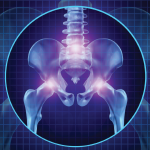PHILADELPHIA—The definition of hypermobility syndrome has broadened considerably in the last 40 years, said Rodney Grahame, MD, a consultant rheumatologist at the Hypermobility Clinics of the University College London Hospitals and at the Great Ormond Street Children’s Hospital in London. However, the condition is still under-recognized. In a group of 500 consecutive patients presenting at his London rheumatology clinic, 45% showed features of the joint hypermobility syndrome (JHS) phenotype. Based on those numbers, Dr. Grahame estimated that “for every one person in England who is diagnosed by a rheumatologist as having hypermobility syndrome, there are probably 19 that aren’t yet diagnosed.”
Dr. Grahame, a world-renowned expert on hypermobility syndrome, was one of a trio of presenters in this ARHP-sponsored session, “Recognition of Joint Hypermobility Syndrome and Its Rehabilitation in Adults and Children,” presented here at the 2009 ACR/ARHP Annual Scientific Meeting. [Note: This session was recorded and is available via ACR SessionSelect at www.rheumatology.org.] Together, they offered a comprehensive overview of the current thinking and management strategies for this condition.
Expanding Definitions
In the past, rheumatologists measured hypermobility using the nine-point Beighton Score, which assesses range of motion in the knees, elbows, thumbs, and spine. In fact, said Dr. Grahame, excessive range of motion is quite easy to spot even without employing the Beighton. “All you need to do is ask patients to stretch their fingers, and you can see immediately the striking changes, as the hands curve upwards toward the sky,” he said. Nevertheless, clinicians should also assess shoulders, cervical spine, and pharyngeal joints. More importantly, Dr. Grahame told his audience, “We should be aware that nonarticular symptoms are common.” Work in the last two decades has shown the importance of other components, including stretchy skin and distinctive scarring patterns (a result of collagen protein defects), functional disorders of the gastrointestinal tract, and neurophysiological defects such as joint proprioceptive impairment.
The more inclusive Brighton Criteria, which feature the Beighton Score as both major and minor criteria, have been used since 1998 to assess this complex syndrome. Clinicians are also challenged to distinguish JHS from other disorders, such as osteogenesis imperfecta, Marfan syndrome, and Ehlers-Danlos syndrome, which all have overlapping features.
Dr. Grahame described the three main categories of the clinical presentation of hypermobility syndrome:
- Musculoskeletal tissue laxity, including noninflammatory joint and spinal pain, dislocations, soft tissue injuries, and problems with supporting structures such as the pelvic floor;
- Pain amplification, which can lead to kinesiphobia and resultant muscle deconditioning; and
- Psychosocial sequelae. Many of these patients, said Dr. Grahame, suffer from anxiety, depression, obesity, isolation, and anger “Often, the anger is directed toward the medical professionals who have been unable to help them,” he noted.
Underappreciation of the condition has had deleterious consequences to those who suffer from it. In 2001, Dr. Grahame found that, among 319 U.K. rheumatologists, half were skeptical about the impact of hypermobility syndrome on patients’ lives.1 Clinicians do not perceive these patients as severely physically disabled because their musculoskeletal systems are largely intact. “They have a set of muscles, but they cannot use them because of the pain,” Dr. Grahame said. The patients may have additional overlying medical conditions that cause other problems.
“They are often young people, highly motivated and high achievers, who have been cut down in their prime,” Dr. Grahame noted. “And often they’re told—because doctors don’t understand what’s going on—that they’re imagining their pain, or that it’s all in their minds. This is a terrible indictment of how we handle these patients.” He argued that JHS warrants a new moniker, and has nicknamed the syndrome “the new rheumatological disability.”
Therapy Principles for Adults
Clinical management of hypermobility syndrome has expanded in parallel with its broadened classification criteria, said Rosemary J. Keer, MSc, a physiotherapist at the Central London Physiotherapy Clinic and coauthor with Dr. Grahame of Hypermobility Syndrome: Diagnosis and Management for Physiotherapists (Butterworth/Heinemann). During the initial examination, clinicians should assess patients for pain; clicking and popping in the joints; subluxations or frank dislocations; paresthesias; and other symptoms—such as fatigue, malaise, or flu-like symptoms—that could be indicative of autonomic nervous system involvement or deconditioning. Physical therapists address joint instability through specific, targeted, and progressive muscle training exercises. The idea is to head off additional injuries and prevent deconditioning, which is often a result of pain and being told (wrongly) by other clinicians to rest instead of move.
The goal in her clinic is to increase function despite pain, and Keer emphasized that to achieve this goal, physiotherapists must actively engage their patients in the process. Often, she explained, the team first works with patients to teach correct breathing and relaxation techniques to prepare for the early, mid, and late phases of treatment. Rehabilitation focuses on restoring a range of motion that is normal for each patient, helping the patient gain control of hypermobile areas, and improving joint proprioception. Exercises begin with establishing trunk stability and teaching appropriate recruitment of pelvic floor and transverse abdominus muscles. Exercises progress from static to weight bearing, and functional activities are encouraged as patients improve.
Clear communication and patient education are crucial. “Often, patients come to clinic with low self-efficacy, because they’ve tried lots of different things before and their condition has only gotten worse,” said Keer. “Part of our work is to address the barriers which are preventing them from going forward, and enable patients to effectively self-manage.” Exercise programs are cognitive based—that is, their “brains are involved,” and exercises are not performed in accompaniment to music or other mental distractions, Keer explained. Recent work at her clinic has shown that motor imagery improves motor and task performance, a result of neural adaptation. Finally, therapists help patients learn the distinction between training pain, which they are encouraged to expect, and exacerbation of symptoms. Pain issues are addressed with specific pain management techniques.
We are trying to help children with hypermobility to be as strong and as fit as possible. … And we think that children can strengthen beyond levels that we thought possible.
—Susan M. Maillard, MSc
Tough Love for Kids with JHS
Engaging the patient is equally important when working with hypermobile children, noted Susan M. Maillard, MSc, a clinical specialist physiotherapist in pediatric rheumatology at Great Ormond Street Children’s Hospital in London. “Our philosophy at Great Ormond Street Hospital is to increase children’s function despite their pain,” she said. To overcome children’s resistance to exercise, they’re told by the treatment team: “You’re double-jointed, so you need double the muscle strength to protect your joints.”
Children with hypermobility syndrome share common complaints at presentation, such as muscle weakness—particularly of the hip abductors and hip extensors—poor central stability, and poor grip. Underscoring Dr. Grahame’s contention about the under-recognition of the syndrome’s complex features, Maillard added that over 40% of the children also report trouble sleeping; 55% are fidgety, resulting in problems at school; and 41% report problems with constipation.
Maillard and her colleagues have initiated both an intensive two-week rehabilitation program and a 12-week outpatient program at their clinic. Both have shown impressive results in increasing muscle strength, decreasing reports of pain, and improved school attendance for those who completed the training programs. She outlined the guiding principles of the holistic approach in designing programs to retrain children’s muscles: Exercises must be prescribed; they must be progressive (at least 15 repetitions are needed for an exercise to work, but 30 repetitions are most effective); weights are useful to add resistance and increase strength; and the program must be easy to do at home, requiring as little equipment as possible.
For children with flat feet, orthotics to maintain the arch can be useful and lace-up boots can provide much-needed foot and ankle stability. Lastly, said Maillard, once children’s muscle strength improves, it’s advisable to encourage participation in normal physical activities, including sports. “Basically, we are trying to help children with hypermobility to be as strong and as fit as possible,” Maillard remarked. “We recognize that the muscles are the dynamic control of the joints and we want these muscles to control the hypermobile range as well. And we think that children can strengthen beyond levels that we thought possible.”
Echoing her colleagues, she concluded with a message that applies to both adult and pediatric patients with hypermobility syndrome: “We, as therapists and clinicians, should help families and children to manage their own home programs. We are there to provide the tools, but not necessarily do it for them.”
Gretchen Henkel is a medical journalist based in California.


